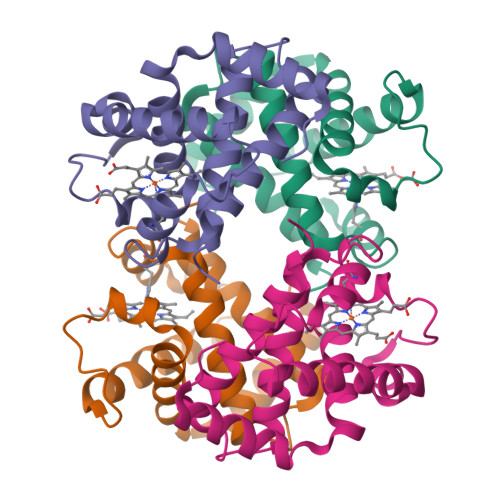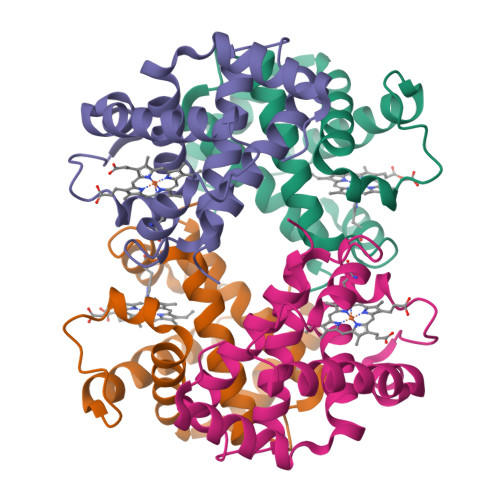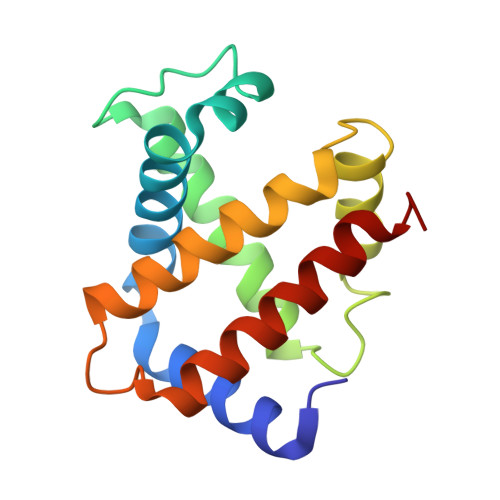The mutation beta 99 Asp-Tyr stabilizes Y--a new, composite quaternary state of human hemoglobin.
Smith, F.R., Lattman, E.E., Carter Jr., C.W.(1991) Proteins 10: 81-91
- PubMed: 1896430
- DOI: https://doi.org/10.1002/prot.340100202
- Primary Citation of Related Structures:
1CMY - PubMed Abstract:
Carbonmonoxy hemoglobin Ypsilanti (beta 99 Asp-Tyr) exhibits a quaternary form distinctly different from any structures previously observed for human hemoglobins. The relative orientation of alpha beta dimers in the new quaternary form lies well outside the range of values observed for normal unliganded and liganded tetramers (Baldwin, J., Chothia, C., J. Mol. Biol. 129:175-220, 1979). Despite this large quaternary structural difference between carbonmonoxy hemoglobin Ypsilanti and the two canonical structures, the new quaternary structure's hydrogen bonding interactions in the "switch" region, and packing interactions in the "flexible joint" region, show noncovalent interactions characteristic of the alpha 1 beta 2 contacts of both unliganded and liganded normal hemoglobins. In contrast to both canonical structures, the beta 97 histidine residue in carbonmonoxy hemoglobin Ypsilanti is disengaged from quaternary packing interactions that are generally believed to enforce two-state behavior in ligand binding. These features of the new quaternary structure, denoted Y, may therefore be representative of quaternary states that occur transiently along pathways between the normal unliganded, T, and liganded, R, hemoglobin structures.
Organizational Affiliation:
Department of Biochemistry and Biophysics, University of North Carolina, Chapel Hill 27599-7260.




















